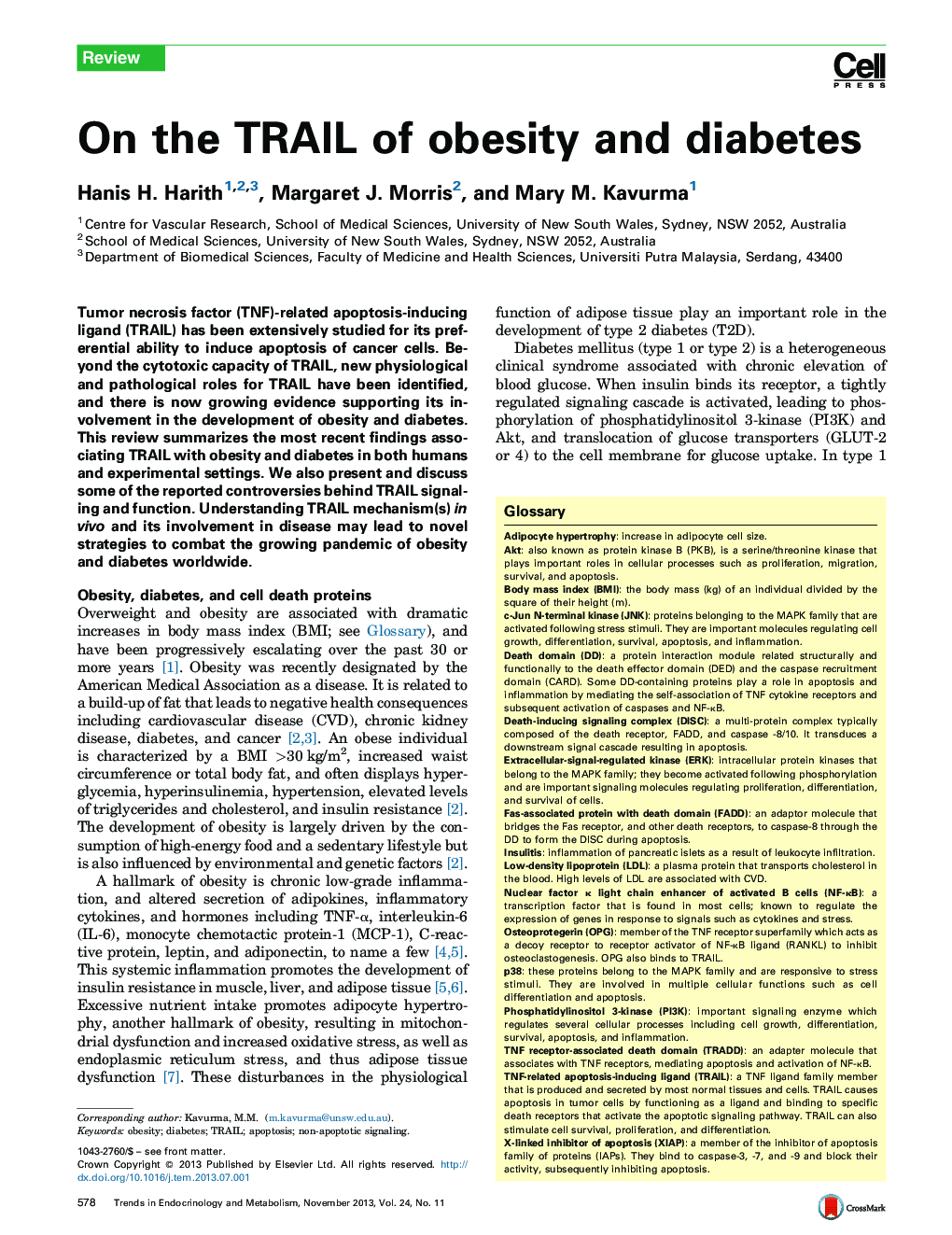| کد مقاله | کد نشریه | سال انتشار | مقاله انگلیسی | نسخه تمام متن |
|---|---|---|---|---|
| 2810544 | 1158454 | 2013 | 10 صفحه PDF | دانلود رایگان |

• TRAIL signaling is complex, and both apoptotic and non-apoptotic functions have been described.
• Clinical and animal studies implicate TRAIL and its receptors in the development of obesity and diabetes.
• Increased circulating TRAIL levels are associated with obesity-related parameters.
• In vivo studies in rodents suggest a protective role for TRAIL in obesity and diabetes.
Tumor necrosis factor (TNF)-related apoptosis-inducing ligand (TRAIL) has been extensively studied for its preferential ability to induce apoptosis of cancer cells. Beyond the cytotoxic capacity of TRAIL, new physiological and pathological roles for TRAIL have been identified, and there is now growing evidence supporting its involvement in the development of obesity and diabetes. This review summarizes the most recent findings associating TRAIL with obesity and diabetes in both humans and experimental settings. We also present and discuss some of the reported controversies behind TRAIL signaling and function. Understanding TRAIL mechanism(s) in vivo and its involvement in disease may lead to novel strategies to combat the growing pandemic of obesity and diabetes worldwide.
Journal: - Volume 24, Issue 11, November 2013, Pages 578–587